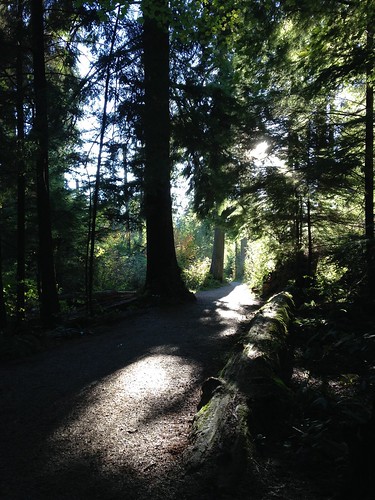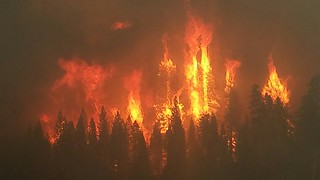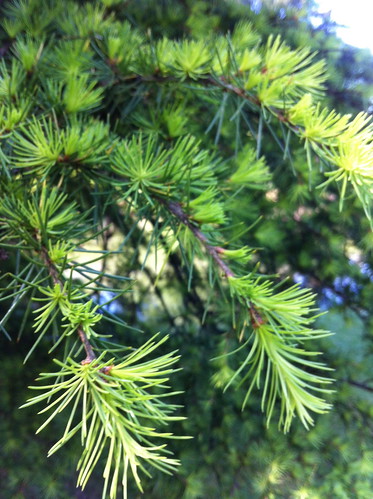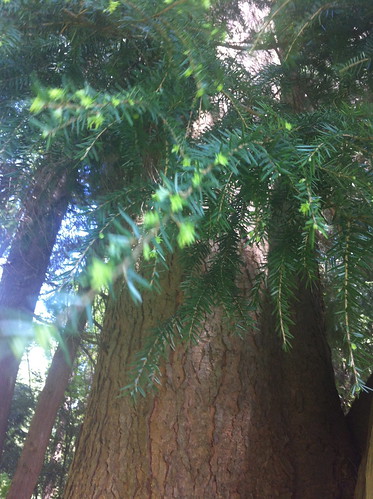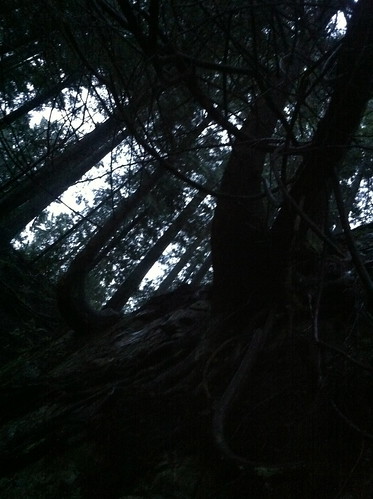Wildfires all over the region have cast a dark smokescreen over what seemed to be endlessly blue skies. Now there's
everywhere. You can look the sun straight in the eye through it without squinting or blinking. It's just an ominous circle of orange-red.
The mountains to the north are invisible, one can't see anymore than just a few buildings away - not unlike a heavily foggy San Francisco-esque day. Except that now there is also a multitude of sensations added to the experience: yesterday as I drove back to the city after spending the day at
Golden Ears provincial park, the smell of burning rainforest welcomed my nostrils like sacrificial incense of the most eerily delicious scent. The kind of joss-sticks that only God should be allowed to be lighting afire: entire old-growth Douglas fir and red cedar, burnt in their entirety, from the fragrantly sweet needles to the moss-covered twigs, branches, bark, heartwoods and all the way to the roots.
My eyes welled up with tears whenever I rolled down the window or stepped out again to realize this is not a bad dream. The mountain forests are burning. In some of my absolute favourite places here too, places I dreamed I would call home someday: Sechelt, Pemberton... By the time the ominous red sun has completely set, the smoke was so thick that my eyes were stung by this communal campfire of massive proportion. We were all walking the streets looking confused, unsettled, worried. Non of the cheery mood that accompanies intentional burning of cedar logs, and no marshmallows were roasted and no potatoes recovered from the embers and they were. Embarrassingly, I also have to admit I enjoyed that smell... If you want to get an idea of what that is like - dip scent strips in the following oils: red cedar, fir absolute and cade or birch tar.
The purpose of this post is not to whine about the smoke in the city (whose inhabitants like to complain about anything that slightly inconveniences us as far as weather goes). I know it is far worse than here where the fires are ablaze right now, and for days remain "contained at zero percent". There simply have to be more measures to be taken seriously to both prevent and combat fires at such humongous scale. And I would be the first one to go up to those mountains and re-plant them with new forests.
I know how terrible it is, because my home village is amidst wild bush, and that gets easily set on fire - either by human error, carelessness or simple nasty intentions. There is an illegal pile of garbage to the east of the village, and as much as a glass that catches the sunlight or an idiot trowing a cigarette butt from a passing car on a day where the wind from the East is blowing - can start a bush fire, if not burn down entire houses to the ground. Which it did, back in June 1988. Five homes were lost, and it took a huge toll on these families and the entire community to rebuild it. Seeing old trees we used to play under disappear forever, and the fire line stop only 2m away from my family's home was a tough sight to digest and we too many years to process it and heal. Only now, 27 years later, some of the carob and oak trees begin to look sorta similar to their former ancestors that graced the hills behind us, and the thorny bush populations is beginning to tone down a bit... We continually re-plant the hills and wild areas in the village with more local wild trees, to help bring it back to what it used to be - or maybe even better. But that taste in my mouth of burnt bush dampened by water is one I would never forget. Nor will I forget the same heavy odour soaked into every nook and cranny in our home, every garment smelling like it for weeks on end, and the scorched hills and meadows a charcoal-black for years and years to come until, finally, new perennial vegetation revived.
I woke up this morning and the ancient-forest incense smell disappeared, and was replaced by the scent of fires that have had water poured all over them. I hope this means a good sign that the fire fighters are beginning to contain them and that this disaster will come to and end soon. But we can't be too optimistic:
The extreme drought conditions, unusual for our rainforest province, have reached a worrisome levels. There hasn't been a proper rain (typically we get at least one good dose of rain a week, even in the hottest months). And now the worst predictions have been confirmed. There have been over 800 fires in British Columbia this year. So I ask you all to pray for rain to return to our rainforest, and for those of you who live here - please, oh please be more frugal with your water use! We can handle dry lawns and shorter showers; but this planet can't afford to lose its
largest temperate forest, with one of the most
diverse and productive biomass!
